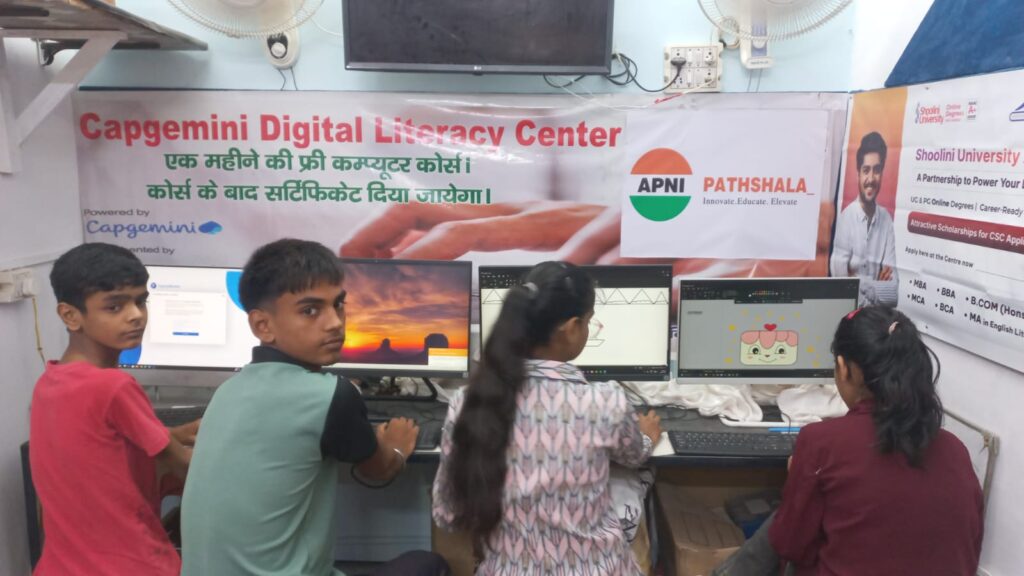With India’s education system under pressure—from outdated teaching to rising costs—many parents are searching for real, sustainable alternatives. In this candid conversation, Dr. Malpani addresses the doubts and practical concerns of a parent exploring digital learning pods. Are they just another passing trend, or do they offer a genuine, community-driven solution to the learning crisis? Read on to discover why this grassroots model might just be the future of education.

Parent: Dr. Malpani, I’ve been hearing a lot about these “digital learning pods” you’re promoting through Teach to Earn. They sound promising—PCs, AI tutors, flexibility. But are they really the solution to our education crisis in India?
Dr. Malpani: I appreciate the question—and your skepticism. You’re right to ask. No system is perfect, and I won’t pretend digital learning pods are a magic wand. But they’re a powerful step in the right direction—especially when compared to the outdated, one-size-fits-all factory model most Indian schools follow.
Parent: What makes them powerful, though? Just giving kids a PC and AI tutor—is that enough?
Dr. Malpani: The PC and AI tutor are the tools, not the solution by themselves. What makes the learning pod model special is the environment we create around those tools. A small, community-based space where students learn with each other and a caring adult is present to guide—not control—them. This setup gives kids both structure and freedom. They’re not passive recipients of lectures—they’re active learners shaping their own education.
Parent: But let’s be realistic. Aren’t there risks? What if students just goof off instead of studying?
Dr. Malpani: That’s a fair concern. Yes, some will goof off. That’s human nature. But here’s what most people miss—these students are still accountable. They want to make their parents proud. They know their future is at stake. If they fail, they don’t just fail a test—they disappoint their families, and they know the consequences. Most students are far more motivated than we give them credit for—especially when we treat them with respect and give them agency.
Parent: Hmm. So you’re saying the fear of failing their parents will keep them in line?
Dr. Malpani: Not just fear—ownership. When students feel like their learning journey is theirs to own, they’re more invested. And in a pod, they’re surrounded by peers who are also exploring, asking, creating. That peer energy is contagious. It becomes a culture of learning, not enforcing. Plus, the adult in the room gently nudges them back when they get distracted—without turning into a warden.
Parent: Okay. But what about practical issues? I live in a lower-middle-class neighborhood. Sometimes the electricity goes out. Internet is patchy. These things worry me.
Dr. Malpani: And they should. Those are real challenges. But none of them are dealbreakers. Electricity can be backed up with inverters. Internet can be shared through mobile hotspots. We’ve worked in many communities where the tech setup is basic, but the commitment is strong. These issues are hurdles, not walls. And the great part is—you only need a few hours a day of solid connectivity for the magic to happen.
Parent: Fair enough. But what if the kids just aren’t motivated? What if they don’t want to learn on their own?
Dr. Malpani: That’s exactly why we need to change the system. Many children aren’t motivated because their schools have crushed their curiosity. They’re told what to learn, when, how, and why—without any freedom or choice. In a pod, they rediscover the joy of learning. It might take time for them to warm up—but once they do, it’s like watching a light switch on. They start asking questions, following their interests, learning at their own pace. And when they succeed, it’s their victory—not the school’s or the teacher’s.
Parent: But is this model sustainable in the long run? Or is it just a stopgap?
Dr. Malpani: It’s not a stopgap. It’s a new foundation. We’re not replacing school with chaos—we’re replacing outdated methods with smarter, more human-centered ones. What’s more sustainable than giving students the tools to learn independently for life? Isn’t that the very goal of education?
Parent: True. And I guess once a child learns how to learn, they don’t need to be spoon-fed anymore.
Dr. Malpani: Exactly! They become self-directed learners—the kind who thrive in today’s world. In fact, many of our pod learners go on to help other students. They build confidence, resilience, and purpose. And that’s something no textbook can teach.
Parent: So what role do parents like me play in this?
Dr. Malpani: A huge one. You are the anchor. You don’t need to be an expert or a techie. You just need to believe that your child deserves better—and that you can help make that happen. You can set up a pod in your neighborhood, invite a few children, and create a space where learning is joyful, not stressful. You can supervise, encourage, and cheer them on.
Parent: It sounds almost… too simple.
Dr. Malpani: That’s the beauty of it. Real change doesn’t need to be complicated—it just needs to be intentional. We already spend thousands on coaching classes and tuitions. Why not invest in something that gives children autonomy, agency, and access to world-class learning resources from the best educators globally—right at home?
Parent: You’ve convinced me, Dr. Malpani. I think I was waiting for someone to tell me it’s okay to take matters into my own hands.
Dr. Malpani: It’s more than okay—it’s necessary. Don’t wait for schools, governments, or experts to fix things. They’ve had their chance. Now it’s your turn.
Take matters in your own hands by starting your own digital learning pod – your children will not get a second chance! 👉 https://www.teachtoearn.in/start-a-teach-to-earn-learning-pod/
